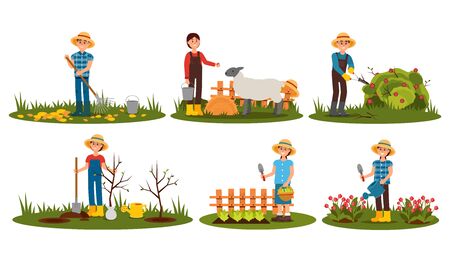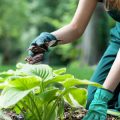Understanding Invasive Species in American Ecosystems
Across the United States, invasive species have become a growing environmental concern, affecting everything from coastal marshlands to mountain forests. These non-native plants and animals often arrive unintentionally through global trade, travel, or even well-meaning landscaping choices. Once established, invasives can outcompete native species for resources like sunlight, water, and nutrients. This disruption threatens biodiversity, weakens ecosystem resilience, and can lead to costly consequences for agriculture, recreation, and natural habitats. The impact of invasive species is not uniform—what harms wetlands in Louisiana may differ greatly from challenges faced in the Pacific Northwest’s forests or the grasslands of the Midwest. Recognizing these region-specific threats is essential to developing effective strategies that protect local wildlife, support sustainable land management, and foster a renewed appreciation for America’s native flora and fauna.
2. Identifying and Monitoring: Citizen Science Approaches
When it comes to managing invasive species while supporting native plants and wildlife, one of the most effective first steps is accurate identification and vigilant monitoring. The power of community involvement—also known as citizen science—cannot be overstated in this regard. By tapping into local knowledge and utilizing user-friendly digital tools, everyday Americans can become nature stewards right in their own neighborhoods.
Spotting Invaders: Practical Tips
Identifying invasive species often begins with observation. Look for unusual or aggressive growth patterns, unfamiliar plants crowding out natives, or sudden changes in local bird and insect activity. Carry a field guide specific to your region, or use reputable apps that can help distinguish between native and non-native species. Consider these common cues:
| Sign | What to Look For |
|---|---|
| Unusual Proliferation | Patches of plants rapidly taking over lawns, parks, or wild areas. |
| Lack of Natural Predators | Species thriving unchecked because local wildlife doesn’t consume them. |
| Changes in Biodiversity | Noticeably fewer native flowers, insects, or birds where the invader appears. |
Harnessing Technology: Collaborative Tools
Today’s digital landscape offers a suite of collaborative tools perfect for ongoing monitoring. Apps such as iNaturalist, EDDMapS (Early Detection & Distribution Mapping System), and Seek by iNaturalist allow users to photograph, identify, and map invasive species in real time. These platforms aggregate data from thousands of citizen scientists nationwide, helping both researchers and land managers respond swiftly to new threats.
Getting Involved: Join a Citizen Science Initiative
Many organizations across the U.S.—including state extension offices and nonprofits like The Nature Conservancy—run volunteer programs focused on invasive species monitoring. Signing up is easy: you’ll receive training on identification and reporting, plus access to community events where you can learn alongside neighbors. Sharing your observations helps build a stronger picture of ecosystem health—and empowers your community to act early against invasives.
Sustainable Success Through Shared Stewardship
The fight against invasive species isn’t just about removal; it’s about building resilient communities that value and protect native biodiversity. By combining practical field tips with smart tech tools and grassroots engagement, we create a culture of sustainability—one backyard at a time.

3. Eco-Conscious Removal Methods
When tackling invasive species, it’s essential to prioritize removal techniques that are gentle on the environment and support long-term ecological resilience. Instead of turning to harsh chemical herbicides or disruptive mechanical equipment, consider methods rooted in sustainability. For example, manual removal—like hand-pulling weeds or digging out invasive roots—can be highly effective for small infestations and helps protect the surrounding soil structure and native plants. Where larger areas are affected, eco-friendly mowing or targeted grazing with goats can keep invasives in check while reducing fossil fuel use and benefiting pollinators.
For aquatic invasives, physical barriers such as screens or bottom mats can block their spread without harming native fish or amphibians. Solarization, which uses clear plastic sheets to harness the sun’s heat and kill invasive seeds, is another innovative solution that avoids chemicals altogether. In all cases, it’s crucial to dispose of removed material responsibly—never composting invasive plant parts or dumping them in natural areas—to prevent accidental reestablishment.
By choosing earth-friendly removal methods, we not only curb the spread of invasives but also nurture a thriving ecosystem where native species can make a comeback. These thoughtful practices reflect a commitment to both environmental stewardship and community well-being, setting an example for sustainable land management across America.
4. Boosting Native Biodiversity Through Restoration
Restoring native biodiversity is a powerful strategy in managing invasive species while supporting resilient ecosystems. Sustainable habitat restoration not only repairs the damage done by invasives but also provides crucial resources for native plants and animals to thrive. Below are key approaches to reintroducing and sustaining native species through mindful restoration practices that align with American environmental values.
Reintroducing Native Plants: Practical Steps
Native plants are the backbone of healthy ecosystems, providing food and shelter for local wildlife. Effective reintroduction involves selecting region-specific species, sourcing from local nurseries, and prioritizing ecological compatibility. Timing plantings to match natural cycles—like early spring or fall—gives natives the best chance to establish strong root systems before facing seasonal stressors.
| Step | Action | Sustainable Benefit |
|---|---|---|
| Site Assessment | Identify soil, sunlight, and water conditions | Ensures right plant selection, reduces resource waste |
| Species Selection | Choose locally adapted natives | Boosts survival rates, supports pollinators |
| Soil Preparation | Avoid chemicals; use compost/mulch | Improves soil health, limits runoff pollution |
| Planting & Maintenance | Install plants during optimal seasons; mulch and water wisely | Reduces irrigation needs, prevents erosion |
Supporting Native Wildlife Through Habitat Management
Sustainable habitat management goes hand-in-hand with native plant restoration. Creating habitat features such as brush piles, pollinator gardens, and water sources encourages the return of native animals—from butterflies to songbirds and amphibians. Avoiding pesticides and leaving some leaf litter or dead wood intact supports beneficial insects and soil organisms essential for ecosystem health.
Community Involvement: A Lasting Impact
Engaging local communities in restoration efforts multiplies impact and nurtures a culture of stewardship. Volunteer planting days, citizen science monitoring, and educational workshops help spread awareness about the importance of natives over invasives. In America’s diverse landscapes—from urban parks to rural preserves—these collective actions build resilience against future invasions while celebrating regional ecological heritage.
The Long Game: Monitoring and Adaptive Management
Sustainable restoration doesn’t end with planting. Ongoing monitoring ensures that native species are establishing well and invasive threats are kept in check. Adaptive management—adjusting strategies based on results—ensures long-term success and fosters landscapes where biodiversity can flourish naturally. By embracing these practices, we create vibrant habitats that benefit people, wildlife, and the planet alike.
5. Engaging Communities for Lasting Impact
For invasive species management and native plant promotion to be truly effective, lasting change must come from the ground up. Empowering communities—especially schools, local organizations, and neighborhoods—ensures that these efforts are woven into the fabric of everyday life and become part of a sustainable future.
Partnering with Schools for Education and Action
Incorporating invasive species education into K-12 curricula helps young learners recognize the importance of biodiversity and equips them to be stewards of their local environment. Hands-on projects like schoolyard habitat restorations, “weed pulls,” or native plant gardens not only teach science in action but also foster a sense of ownership and pride. Collaborate with teachers and environmental clubs to organize field trips, citizen science projects, or poster contests focused on the benefits of native species.
Mobilizing Local Organizations
Community groups such as garden clubs, Scouts, faith-based organizations, and conservation nonprofits can play pivotal roles. Host workshops on identifying invasives versus natives, offer training sessions on eco-friendly landscaping, and organize neighborhood cleanups targeting invasive hotspots. By providing resources like tool lending libraries or seed exchanges featuring native plants, these organizations can make it easier for everyone to participate.
Neighborhood-Based Stewardship Programs
Encourage neighborhoods to form stewardship teams dedicated to monitoring public spaces, parks, and even vacant lots for invasive threats. Community-driven mapping projects using smartphone apps can help track problem areas and share data with local agencies. Celebrate successes by recognizing “Native Habitat Champions” or hosting annual events like Pollinator Parades that highlight restored habitats and the wildlife they support.
Building Lasting Connections
The key to long-term impact lies in making invasive species management a shared responsibility—and a source of community pride. Regular communication through newsletters, social media groups, or neighborhood meetings keeps everyone informed and inspired. When people see tangible results—like the return of butterflies or songbirds—they’re more likely to stay engaged and spread the word.
Together for a Greener Future
By weaving educational initiatives, organizational partnerships, and neighborhood action into our approach, we create resilient ecosystems and communities alike. The fight against invasives—and the celebration of our native heritage—isn’t just an environmental issue; it’s a way to build connections and ensure healthy landscapes for generations to come.
6. Embracing Policy and Advocacy
Promoting ecological resilience in the face of invasive species requires more than individual effort—it calls for collective action, informed policies, and active advocacy. Across the United States, several government initiatives and community programs are designed to empower citizens to protect native ecosystems.
Understanding Key U.S. Policies
The National Invasive Species Council (NISC) coordinates federal efforts to prevent and control invasives, while the Lacey Act helps regulate the importation of potentially harmful species. Many states also have their own regulations, such as Californias restrictions on planting invasive ornamentals or Florida’s invasive species management plans. Staying informed about these policies enables individuals and communities to align their actions with broader conservation goals.
Engaging with Community Programs
Local and regional initiatives—like cooperative weed management areas (CWMAs), “Pulling Together” campaigns, and community science projects—offer hands-on opportunities to make a difference. Programs like the National Wildlife Federation’s “Garden for Wildlife” encourage residents to plant natives and remove invasives right in their own backyards, making it easy to take meaningful steps at home.
Advocacy Opportunities for Everyday People
Advocacy can start small: join local environmental organizations, attend town meetings on land use, or write to elected officials supporting stronger invasive species controls and native habitat restoration funding. Social media campaigns and public education events amplify awareness and inspire wider participation.
Sustainable Stewardship Moving Forward
By embracing policy and advocacy, Americans become stewards of their local landscapes. From supporting legislation to volunteering in restoration projects, every action contributes to a healthier, more resilient environment where native species can thrive. Together, we can create lasting change that honors both biodiversity and sustainability for generations to come.


